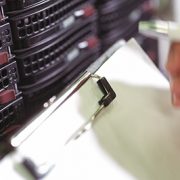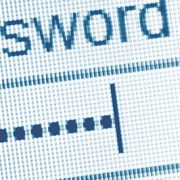5 Biggest Mistakes Business Owners Make With Their Network
Introduction:
We’ve been helping Small-to-Medium Size Businesses (SMBs) keep their systems healthy since 1999. Many times, we receive panic calls from business owners whose systems suddenly went down, are acting up intermittently, or have dramatically slowed down. We can usually trace many of these issues to one or all of five (5) mistakes business owners make when managing the IT portion of their businesses:
The 5 Biggest Mistakes:
- Not having an automated off-site back-up system in place. Many small businesses either don’t make backups of their data or they do so manually at irregular times. You know, when they have the time. The problem is, running a business is hard and there never is time. Not having an automated off-site back-up system in place is like driving a car without wearing a seatbelt! A very dangerous thing to do.
If you don’t have one, contact a Managed Services Provider, like XSolutions, and put an IT Backup/Disaster Recovery (BDR) system in place. XSolutions offers a less expensive data backup system as well as comprehensive Disaster Recovery Solutions. Both are automated solutions so you’re continuously protected.
- Not centralizing your data on your server. Data, especially critical business documents should be centralized in easy-to-find, navigable folders on your server and accessible only to appropriate personnel. Don’t allow employees to save business documents on their workstations or you’ll quickly lose control over unsecured information. Centralized documents on servers make sharing them easier, especially if you and your employees work from remote locations.
- Not keeping your anti-virus and anti-malware software up-to-date, and performing periodic scans. It’s amazing to me when I hear that in this day and age, businesses that handle important client and proprietary information don’t keep their anti-virus and anti-malware software updated. Some never run scans on their systems at all! Most people know how important it is but don’t want to take the time to do it. Viruses, Spyware, and Malware slow down systems, steal information or in some cases wipe data out, and are used in many cases to steal identities and corporate information.
All systems need both, Anti-virus and Anti-malware programs. If you don’t have time to maintain your systems then call a IT Managed Services Provider, like XSolutions, who will maintain your systems after hours on a regular basis. At the rate that malware is created, no one can guarantee that you’ll never get a virus even with updated anti-virus software, but it will be much harder to get infected and if you do, your software can take steps to mitigate the damage.
- Not educating employees on safe computing. Users are the weakest link in the IT security chain. Social Engineering attacks targeting company employees cost businesses millions of dollars each year, not to mention the leakage of confidential information. Make sure that all employees know what information they should never divulge to anyone over the phone and to report all incidences immediately so you can limit the damage should a successful attack occur. Also, educate your employees on email security since many social engineering attacks start with an email.
- Not performing regular maintenance on servers and workstations. For your systems to operate properly and minimize issues and downtime, ongoing monitoring and maintenance is essential. The old way of waiting until a server or workstation goes down before calling a technician is inefficient and costs more money in the long run. This is called break-fix and it is costly. Companies that only offer break-fix are not in tune to your business. In fact, they only make money when your systems break down. It’s to their benefit when you have problems. If your IT service provider only offers break-fix services, change providers!
Managed Services is all about prevention. You need a Managed Services Provider (MSP) such as XSolutions, to manage your company’s IT infrastructure. MSP’s take a proactive approach by implementing ongoing monitoring and maintenance to reduce downtime, increase productivity, and save you money over time. When systems don’t perform properly, your MSP will be alerted through its monitoring software and in most cases, they’ll fix the problem remotely. This way, small issues don’t become large disasters. Most times, you’ll never even know a problem occurred and that it was taken care of by your MSP. The fact is that a Managed Services Provider is more profitable when you don’t have problems because most contracts include Service Level Agreements and support time. So, it is in the best interest of both the client and MSP that systems are up and running. Both client and vendor are on the same page with a keen interest in ensuring system uptime.
Conclusion:
Computers are a lot like cars. They run great when they are brand new, but if the owner does not properly maintain them, the car soon starts to run badly and eventually breaks down. Ongoing, scheduled maintenance is the key to keeping a business’s IT systems running at peak performance.
Running a business is hard and dealing with constant computer problems can eat up an inordinate amount of time that could have been focused on growing the company. The best solution to making sure your company’s computer systems are running as they should is to hire a Managed Services Provider to manage your IT systems so you can concentrate on growing your business.











